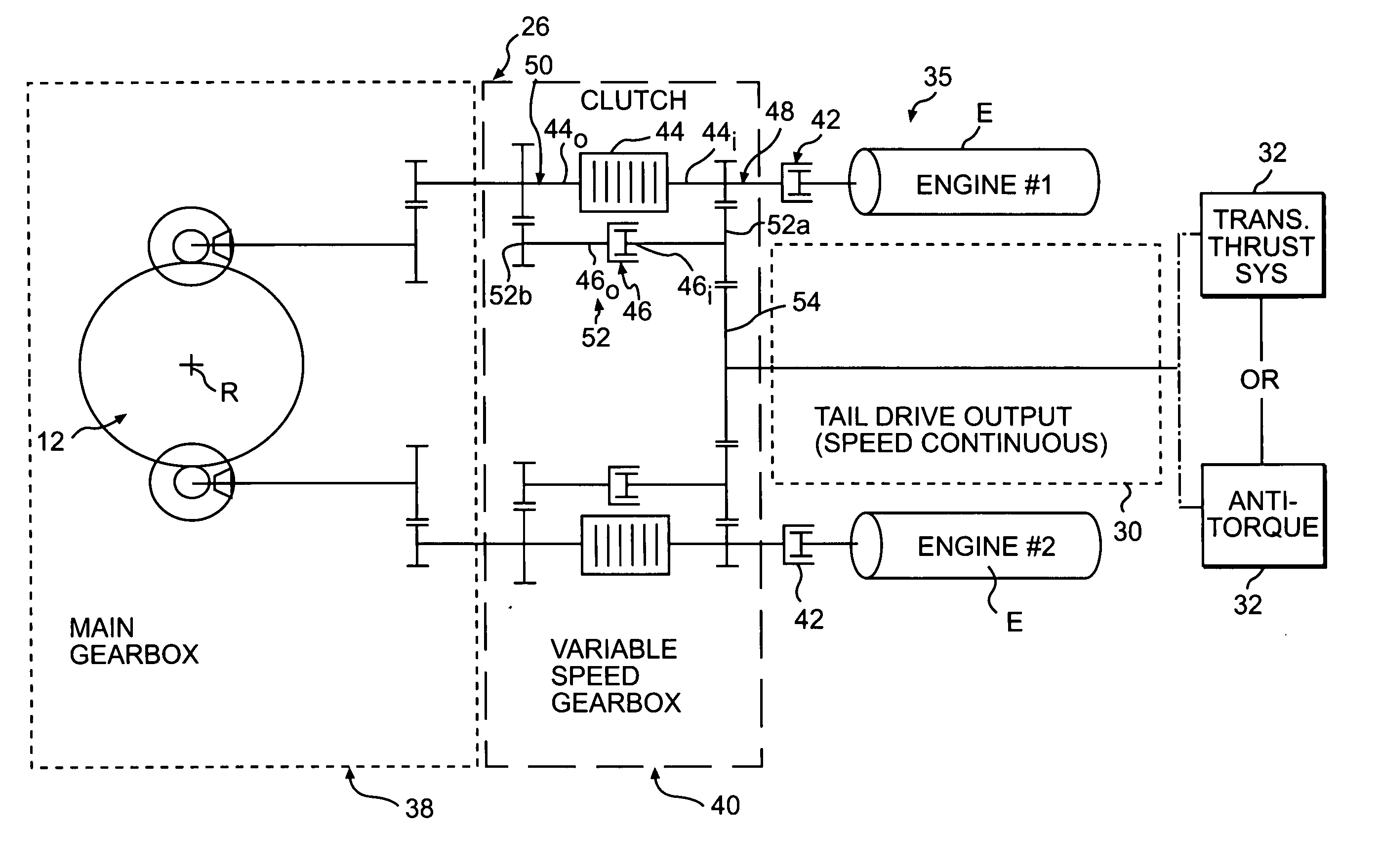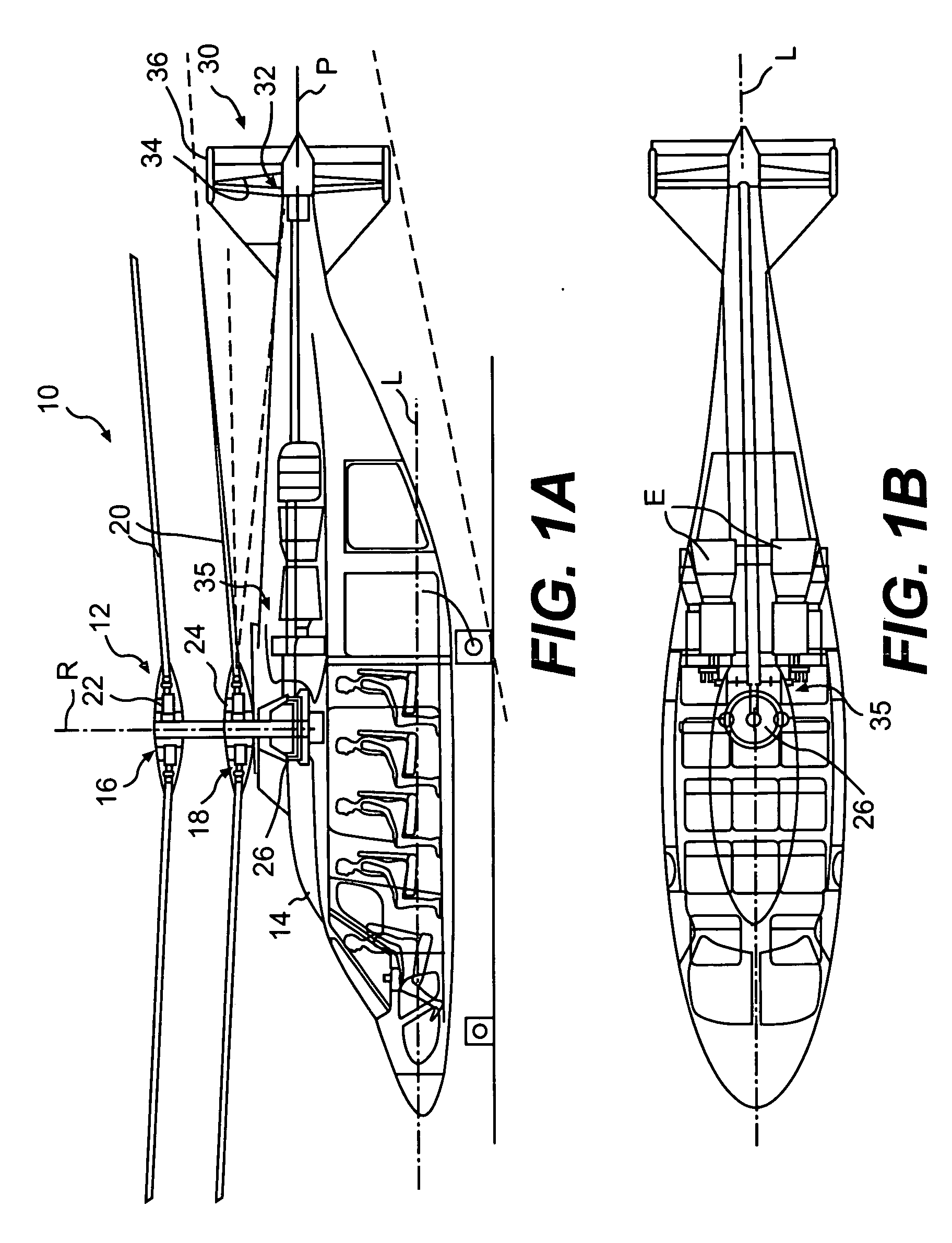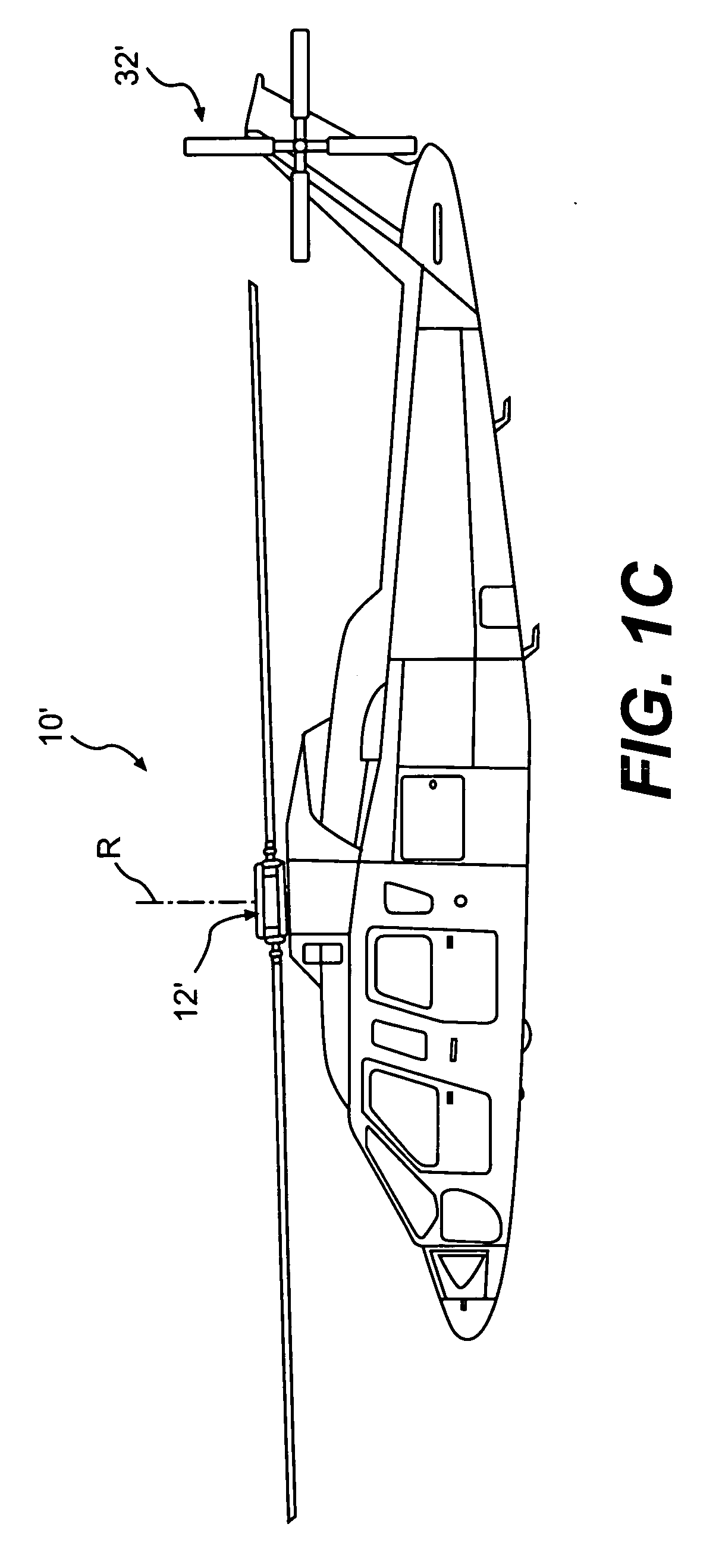Variable speed transmission for a rotary wing aircraft
- Summary
- Abstract
- Description
- Claims
- Application Information
AI Technical Summary
Benefits of technology
Problems solved by technology
Method used
Image
Examples
Embodiment Construction
[0020]FIGS. 1A and 1B illustrate a vertical takeoff and landing (VTOL) rotary-wing aircraft 10 having a main rotor system 12. The main rotor system 12 is preferably a dual, counter-rotating, coaxial rotor system, however, any other rotor system known in the art including, but not limited to, single, tandem and dual rotor systems may also be used with the present invention. That is, although the present invention is being described in combination with a high speed compound rotary wing aircraft, other aircraft configurations, including a more conventional configuration with a single main rotor system 12′ and an anti-torque tail rotor system 32′ (FIG. 1C) will also benefit from the present invention.
[0021] As shown, the aircraft 10 includes an airframe 14 which supports the main rotor system 12. The aircraft 10 may also incorporate a tail drive system 30. The tail drive system 30 is preferably a translational thrust system 32 that provides translational thrust generally parallel to an...
PUM
 Login to View More
Login to View More Abstract
Description
Claims
Application Information
 Login to View More
Login to View More - R&D
- Intellectual Property
- Life Sciences
- Materials
- Tech Scout
- Unparalleled Data Quality
- Higher Quality Content
- 60% Fewer Hallucinations
Browse by: Latest US Patents, China's latest patents, Technical Efficacy Thesaurus, Application Domain, Technology Topic, Popular Technical Reports.
© 2025 PatSnap. All rights reserved.Legal|Privacy policy|Modern Slavery Act Transparency Statement|Sitemap|About US| Contact US: help@patsnap.com



